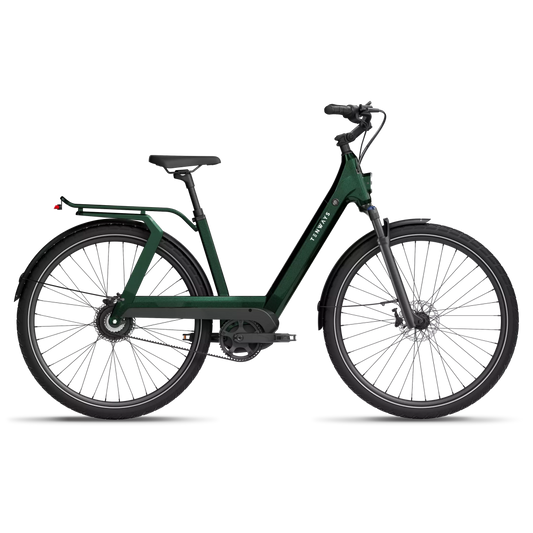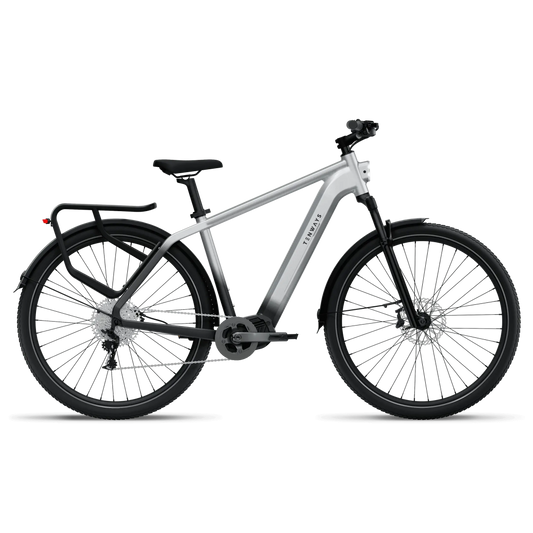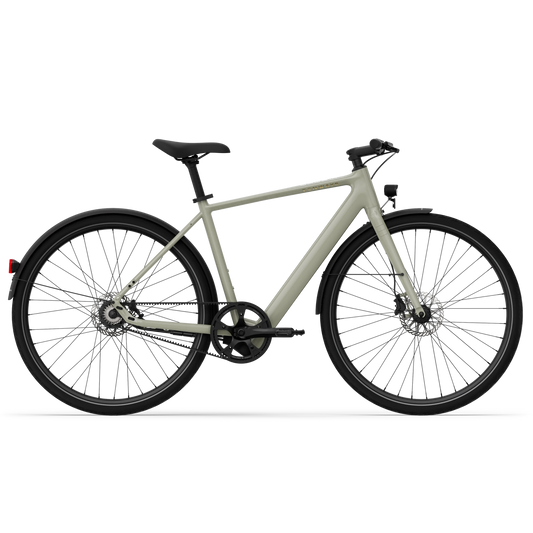Braking effectively on an e-bike is crucial for a safe and enjoyable riding experience. E-bikes, with their unique design and weightier nature, require a nuanced understanding of their braking systems. Whether you're a seasoned cyclist transitioning to an e-bike or a new rider, mastering the intricacies of e-bike brakes can enhance your control and confidence on the road. This guide takes you through the essential aspects of e-bike braking, from understanding the basic mechanics to adapting your technique for different conditions, ensuring you ride safely and stop smoothly every time.
Understanding your e-bike braking system
To stop safely on your e-bike, it's essential to understand how your braking system works. Generally, the right handbrake controls the rear wheel, and the left handbrake controls the front wheel, though this convention is the other way around in some regions. The front brake provides stronger braking power, and the rear brake allows the bike to slow down with some resistance but without stopping abruptly. The front brake is the primary force for bringing your bike to a complete stop.

The mechanics of braking
While riding, your forward motion generates kinetic energy. Brakes, whether rim or disc, stop the bike by halting the wheels' rotation. Rim brakes apply force at the wheel's rim, while disc brakes apply force at the wheel's centre.
Effective braking involves using both the rear and front brakes in sequence: start with the rear brake to reduce speed, then apply the front brake to come to a complete stop. This method for a gradual stop prevents the "slingshot effect", where the rear wheel lifts off the ground during sudden stops, and so ensures a safe and controlled halt. For heavier e-bikes weighing over 20kg, the effect is less likely to happen; however, extra distance for the braking process is required.
TENWAYS brakes
All TENWAYS e-bikes feature hydraulic disc brakes. Unlike standard disc brakes that rely on force applied through cables, hydraulic brakes use fluid pressure to push pistons and clamp the brake pads. Though more expensive, hydraulic brakes offer advantages such as reduced wear and tear and consistent performance, even in wet conditions. With the braking action taking place at the center of the wheel they are effective in compensating for e-bikes' higher weight and speed.

Braking techniques: Gradual vs sudden
Braking on an e-bike requires practice, especially if you're accustomed to a non-electric bike. Aim for gradual stops to prevent the rear wheel from lifting, to maintain stability and control. Follow this sequence for gradual braking:
- Apply both brakes gently.
- Gradually increase the pressure on both brakes
- Shift your weight backwards.
- Apply full force on the brakes to come to a complete stop.
- Practice makes perfect! Test this method out in a calm setting first, like a park, to get comfortable with braking.
In emergencies, a sudden stop may be necessary. Apply the front brake first, followed by the rear brake a fraction of a second later. Ensure your weight is shifted backward to keep you seated and prevent you from potential injury by being thrown forward.
Adapting to different terrains and conditions
Even with hydraulic brakes, braking performance can be affected by weather and terrain. Wet conditions reduce friction between the wheels and the ground, increasing the stopping distance. In these conditions, apply the brakes earlier. Unstable surfaces like gravel or mud and downhill slopes also increase stopping distances. Adjust your braking distance accordingly to ensure a safe stop.

Regular maintenance for optimal braking
Hydraulic brakes require regular maintenance, including replacing brake pads and hydraulic fluid. Components will degrade or accumulate dirt over time, affecting performance and potentially causing noise during braking. Brake pads can be cleaned with a high-proof alcohol product, and for any complex procedures we recommend contacting your local bike shop or our service center, who will be able to service your e-bike and provide you with the best information and maintenance advice.
Conclusion
Mastering e-bike braking is an essential skill that ensures both your safety and the longevity of your bike. By understanding the mechanics of your braking system, practicing proper braking techniques, and adjusting for different terrains and conditions, you can ride with confidence!





























